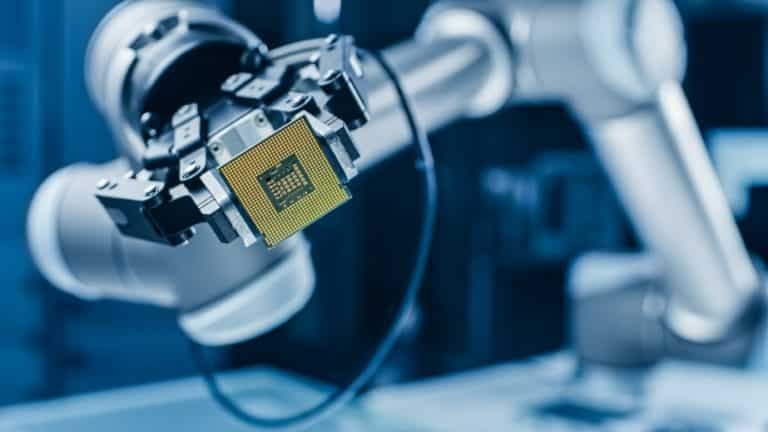How is artificial intelligence in the pharmaceutical industry impacting manufacturing trends? (Part 1)
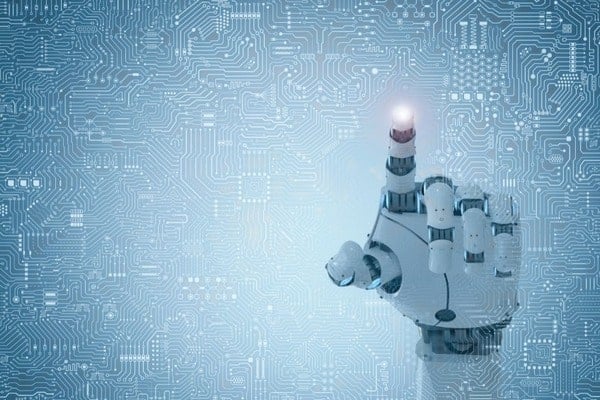
Top 10 uses of Artificial intelligence in the Pharmaceutical Industry
Artificial intelligence technology is rapidly expanding, enabling the delivery of precision medicines and safer interventions. The use of artificial intelligence in the pharmaceutical industry & healthcare sectors has the capacity to:
What is the definition of Artificial Intelligence (AI)?
Artificial Intelligence (AI) means systems, machines and/or technologies, such as algorithms, that “mimic human intelligence to perform tasks.” AI is also referred to as a self-learning technology, meaning equipment and/or technologies that “can iteratively improve themselves, based on the information they collect”. This is known as ‘machine learning’ or ‘deep learning’ and enables smart machines (example: deep Q-learning robotics).
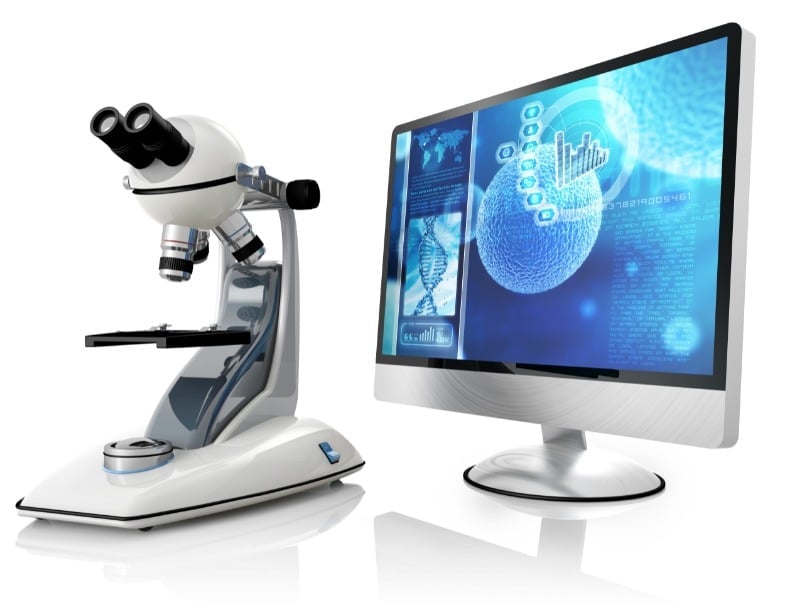
(Source: Adapted from Cornell University articles on Computer Learning by J Ibarz, J Tan, C Finn, articles by Oracle, & other computer science journals. Link to article on deep Q-Learning: robotic arm.)
Note: This article Part 1 of 2, describes the use of Artificial Intelligence in Pharmaceutical Manufacturing and describes Life Science AI Trends #1 to #5. Click here to read Part 2, which describes AI trends in the Medical Device industry (Life Science AI Trends #6 to #10).
The Impact of AI on Healthcare & Other Life Sciences
Pharma 4.0™ insights – AI in the Pharmaceuticals & Medical Devices sectors
The impact of Artificial Intelligence in the Pharmaceutical Industry, and of AI technology pertaining to personalised healthcare, environmental monitoring, and drug safety monitoring, is significant.
In the pharmaceutical & medical device manufacturing sector, AI is increasingly being used in relation to:
- Drug development research and clinical trials
- Engineering & manufacturing processes for medical devices & pharmaceuticals
- Storage & distribution tracking
- Complaints management, pharmacovigilance, and recalls
Will the use of Artificial Intelligence (AI) replace life-science industry employees?
Artificial intelligence does not necessarily mean fewer employees.
As with all emerging technologies, humans are still required to design these systems, tweak their algorithms, and apply them as appropriate to the issue(s) being addressed. Once an AI application is implemented, there is ongoing monitoring of the AI system for suitability & effectiveness, and proactively managing cybersecurity risks.
For example: Product Quality Reviews and CAPAs may be guided by data that is collected and analysed by an AI system, but these still require human management & interventions.
What increased use of AI generally means, however, is that different employee skill sets will be required to take advantage of the many capacities of Artificial Intelligence used in health care, life sciences and drug development settings.
This is where having persisted through statistics courses and being passionate about ‘branch and bound algorithms’ will come in handy. Yet in this industry, personnel/talent should have life science expertise AND computer science expertise, and requisite communication skills.
Artificial Intelligence Technology & Trends (Life Sciences/Medical Sciences)
In this article, we’ll overview the top 10 trends involving the use of Artificial Intelligence (AI) in the life sciences/medical sciences sectors (e.g., healthcare, drug development, pharmaceutical manufacturing, and medical devices).
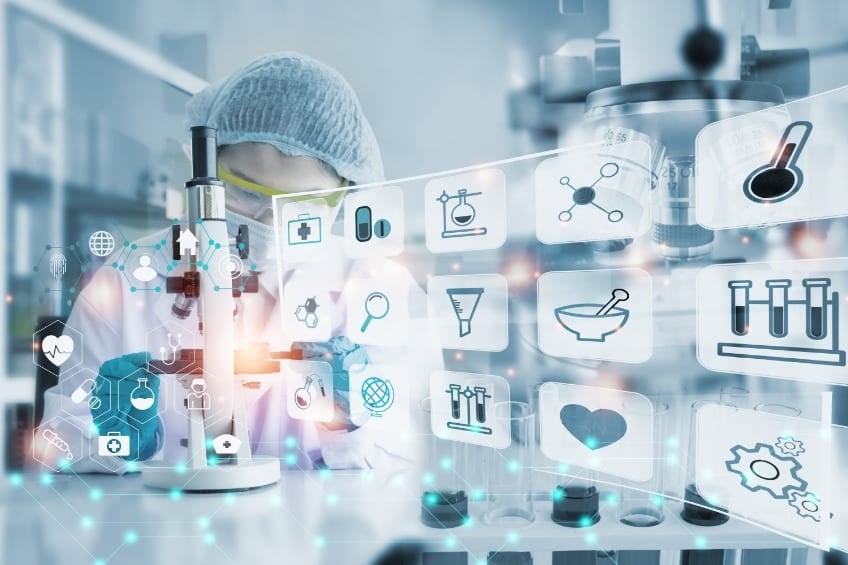
Note: This is Part 1 of 2 articles on AI in the pharmaceutical industry and medical device industries. Part 1 focuses on AI trends in the pharmaceutical manufacturing industry. To read Part 2, which focuses on AI trends in the Medical Device sector, click here.
Background to AI in life science industries
Machine learning has been around since the early 1950s. There have been myriad innovations in hardware/firmware and software since then, overcoming earlier limitations relating to computational power, processing speed, and exorbitant equipment costs (~$200,000 USD per month).
While AI is not necessarily new, advances in computational power and processing speed have expanded AI technologies at a rapid pace.
New technologies are, however, generally expensive to adopt in their early stages of development/implementation. They also bring undetermined risks. This can leave Pharmaceutical manufacturers hesitant to adopt AI.
Despite these hurdles, the potential savings involved – including reducing human errors and increasing the detectability of deviations and OOS results – make artificial intelligence an alluring step into the future of diagnostic medical care, drug development, and treatment decisions.
Overall, Artificial Intelligence applications in healthcare settings – including in relation to pharmaceutical, medical device and/or surgical treatments – can enhance patient safety and improve their treatment outcomes.
As you review this AI trends list below, you’ll no doubt be thinking:
- What changes will using AI technology mean for your PQS or Quality Management System (QMS)?
- What new Risk Management responsibilities need to be considered in view of cybersecurity risks relating to artificial intelligence systems?
- How will SaMD compliance requirements and data integrity management change?
Because AI technology will continue to outpace regulatory guidance updates, you’ll need to prepare to adapt to the regulatory changes that eventually follow suit. Yet due to the diversity in the pharmaceutical/biologicals and medical device fields, you’ll also need to work your way around regulatory compliance confusion, particularly while companies and Regulatory Authorities attempt to adapt to the many applications, capacities, and risks of AI.
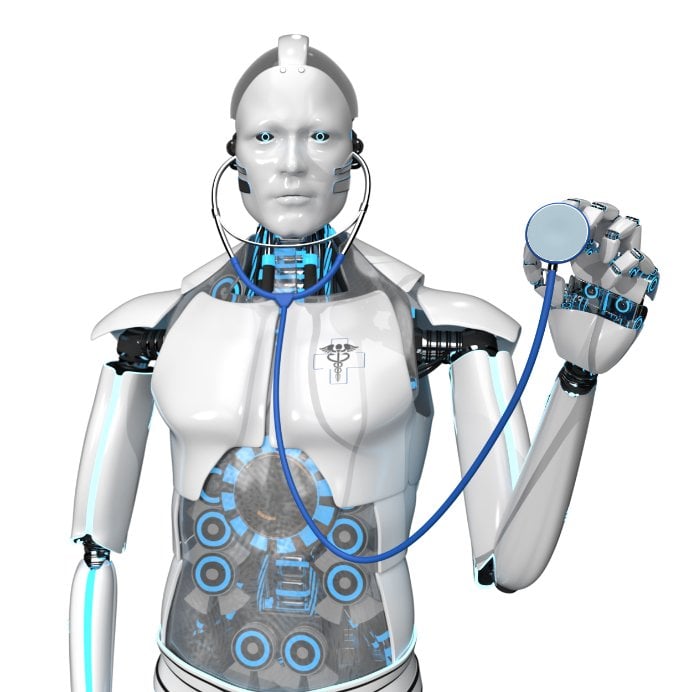
Top 10 Uses of Artificial Intelligence in Healthcare & Pharmaceutical Manufacturing
This article is 1 of 2 articles on this pharmaceutical industry topic. It contains the first 5 of the Top 10 uses of Artificial Intelligence in the Pharmaceutical Industry and other life science sectors. Click here for Part 2 of this article (scheduled for publishing on 21 November 2022), which focuses on AI in the medical device sector, and other top 10 blogs for the GxP/Pharmaceutical & Medical Device manufacturing sectors.
Life Sciences AI Trend #1 – Increased Adoption of AI
Adoption of Artificial Intelligence in the Pharmaceutical Industry
The # 1 AI trend in the pharmaceutical/medical device industry is for increased use of AI technologies during product development, technology transfer, manufacturing, supply chain management, storage & distribution logistics, & overall quality management including trends monitoring.
Examples include:
- AI used in drug development (e.g., clinical study data analysis and ‘real world data’ collection & analysis, study participant’s DNA analysis, etc.)
- Medical device design (e.g., surgical robotics, precision measuring, customised orthopedic devices, 3D printing, algorithms for cardiovascular equipment, etc.)
- Software (batch tracing computerised systems, packaging/serialisation, user identification assurance, supply chain management)
AI Challenges/New Requirements:
- System design and initial costs of implementation
- Integration with (or replacement of) existing systems
- Personnel training/site participants training for electronic systems
- Compliance with regulatory requirements such as PIC/S Annex 11, GAMP5 requirements, other standards
- Data Integrity & system security (cybersecurity risk management)
Life Sciences AI Trend #2 – Big Data gets even BIGGER
Pharmaceutical Industry, Clinical Trials & AI (big data)
Automatic data collection is one of the key benefits of global interconnectivity via the internet of things (IoT). Data collection, along with smaller, faster, & more affordable computerised systems, is growing up – and growing larger.

In the information age, storing data – and being able to analyse it accurately & efficiently –enables companies to respond quickly to risks.
For the pharmaceutical and medical device manufacturing industries, having reliable data and faster processing capacity has helped manufacturers better manage:
- Drug development processes
- Clinical trials
- Supply chain disruptions related to the pandemic
- Batch traceability including batch distribution status/location
- Monitoring of complaints, SAEs, & drug safety signals
- Product recalls (when warranted)
AI Challenges/New Requirements:
- Talent recruitment: data analysts, coders, and IT experts with industry experience will be in high demand
- Enhanced processing speeds to perform more complex algorithms on larger data sets
- Internet reliability for data storage & access (points of failure)
- Data integrity assurances in view of increased cybersecurity risks
- Undetected fraud or data errors
- Larger data storage equipment/cloud systems
- Increased costs & global shortages of essential materials and power to use the equipment/technology (e.g. electricity, battery materials, equipment metals, etc.)
- Environmental impact assessments and sustainability strategies
Life Sciences AI Trend #3 – Drug Development
Personalised medicine & DNA specific drug development
Pharmaceutical products and medical devices can affect individuals differently. When it comes to healthcare, one size – or one medicine – does NOT fit all. While we may only be on the cusp of personalised medicine (DNA-specific product development), DNA analysis using AI technologies will play an even greater role in pharmaceutical testing and medical device engineering.
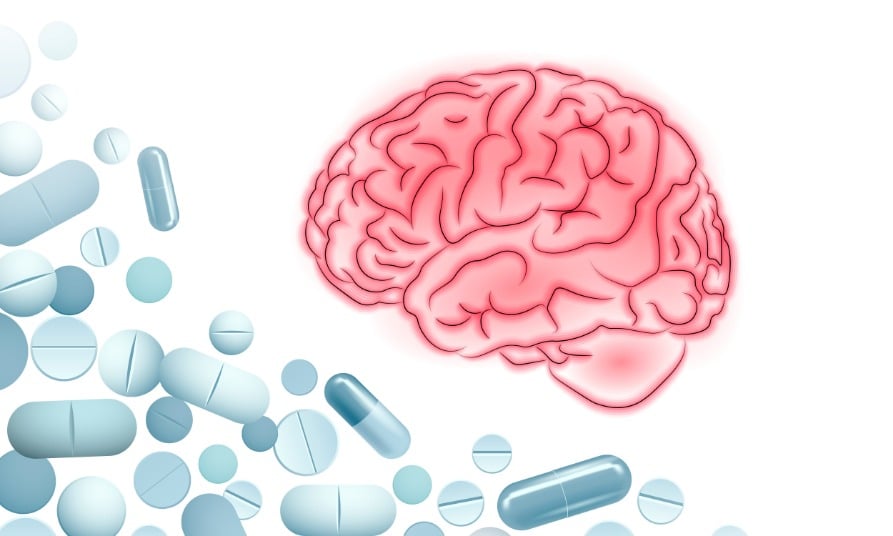
Examples include:
- AI for analysing new drug targets, formulas & cytotoxicity
- AI analysis of outcomes for different dosing regimes
- AI analysis of the impact of DNA, gender & heritage on treatment effectiveness
- AI explorations of epigenetic changes from new drug treatments
- Simulations of organs and physical/neurological processes (e.g. how our brains function)
- Faster data collection/analysis and improved reporting of adverse events
AI Challenges/New Requirements:
- Processing speed requirements for performing more complex algorithms on larger data sets
- Internet reliability for data storage & access (points of failure)
- More powerful yet energy-hungry equipment
- Environmental concerns
- Limited global resources of equipment materials/metals/etc.
- Security for cloud-based systems
- Reliable yet secure backup systems that can be maintained/accessed over several decades
Life Sciences AI Trend #4 – Clinical Trial Recruitment
Clinical studies of new medicines or medical devices
Another trend in AI in drug development includes using AI for clinical trials, including pharmaceutical study recruitment, consenting, randomisation, data analysis, and clinical evidence reporting activities.
Note: the pandemic had a significant impact on clinical trials. Trial sponsors rapidly adapted paper forms & physical trial site visits to “electronic consents (eConsent), electronic Clinical Outcome Assessments (eCOA’s), and remote visits (TeleVisits)”. Source: Adapted from Medable
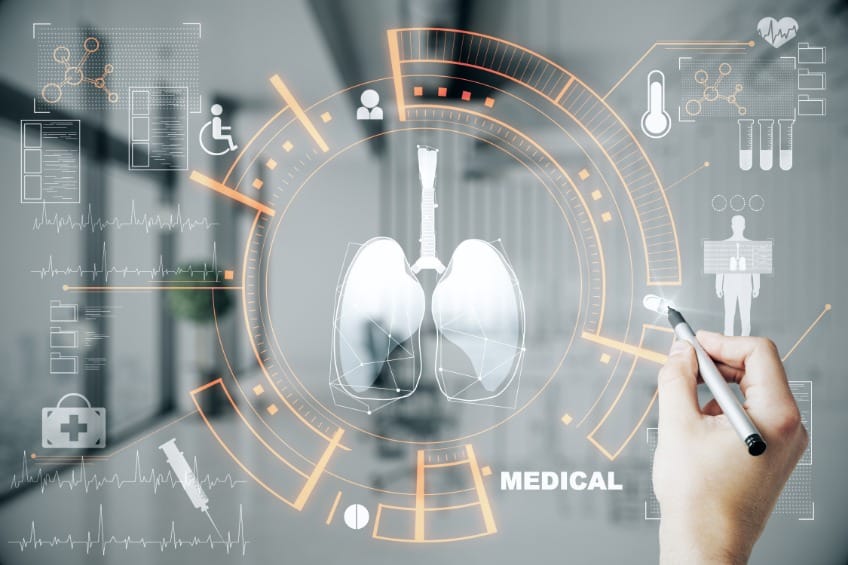
Examples include the use of AI to enable:
- Decentralised Clinical Trials
- Remote screening of study participants based on inclusion/exclusion criteria
- Electronic consent processes
- Telehealth visits for trial participants
- Improved sharing of forms and outcome information
Challenges/New Requirements:
- Personnel training & site-specific training
- Patient/participant computer experience (assessments of study participant familiarity with computerised systems)
- PQS or QMS Documentation requirements (GxP compliance)
- Plain language writing and Document Change Control systems
- Compliance with Privacy laws, HIPPA, etc.
- Data system access security checks and user authentication
Life Sciences AI Trend #5 – Efficiency analysis
Artificial Intelligence is commonly used in laboratories during drug development & batch testing processes. AI is also used for comparing complex case study scenarios when making changes to production processes or equipment.
In the pharmaceutical industry, AI can be used to explore the potential impacts of CAPAs or other changes to batch production activities. AI is commonly employed when analysing other issues impacting product quality, such as Pharmaceutical Products Complaints Management/drug safety signal monitoring.
In medical device development and manufacturing, AI has long been used for materials analysis, prosthesis measurements and 3D printing, and automated manufacturing processes.
Examples include:
- Technology transfers
- Analysing manufacturing trends, e.g. deviations & OOS/non-conformances
- CAPA planning & post-implementation analysis
- Optimisation: Gradient of descent analysis (optimising the function)
- Determining operational efficiencies
- Assessing manufacturing cost savings
- Impact of personnel rostering changes or campaign production runs
- Equipment comparisons/new equipment evaluations
Challenges/New Requirements:
- Qualified personnel with expertise in:
- Programming
- Statistics
- Data analysis
- Algorithm troubleshooting
- Data monitoring & cleansing resources (merged databases)
- Storage and retrieval systems
- Cybersecurity risks
This was Part 1 of 2 articles on AI in the life sciences sectors. This article focused on AI trends in the pharmaceutical manufacturing industry.
To read Part 2, which focuses on AI trends in the Medical Device sector, click here.
Regulatory Compliance Resources
- Annex 11 – Computerised Systems requirements (GMP compliance)
- ISO 13485: Quality Management Systems for Medical Devices (ISO 13485:2019)
- ISO 14971: Medical Devices – Application of Risk Management (ISO 14971:2019)
- Recall readiness (requirements for recall training in relation to therapeutic goods)
- Complaints management (complaints handling, consumer feedback on therapeutic goods, complaints management regulations, etc.)
- EU Medical Device Regulations (MDR)
- EU Annex 21: Importation of Medicinal Products into the EU
Journal Articles (Resources & Further Reading)
For the final part (Part 2) of this article, “Artificial Intelligence in the Pharmaceutical Industry”, visit our top Pharmaceutical industry articles and GMP compliance blogs. (Scheduled for publication on November 21, 2022).
Algorithms & stats are now core to research
JourAuthors include Peter Jamieson, Farnaz Gharibian, Lesley Shannon, Steve Wiltonnal: TNN – ARDHRAN NAIR; Published September 23, 2022.
Using data-mining techniques to improve combinatorial optimization algorithms
Authors include Peter Jamieson, Farnaz Gharibian, Lesley Shannon, Steve Wilton
Journal: Journal of Algorithms & Computational Technology; Published October 10, 2022.
Article on benefits of genomic sequencing and precision medicine/personalised medicine (Australia)
FDA article on In vitro diagnostic medicines, DNA testing and personalised medicine
Last updated on November 28th, 2022 at 05:35 am





